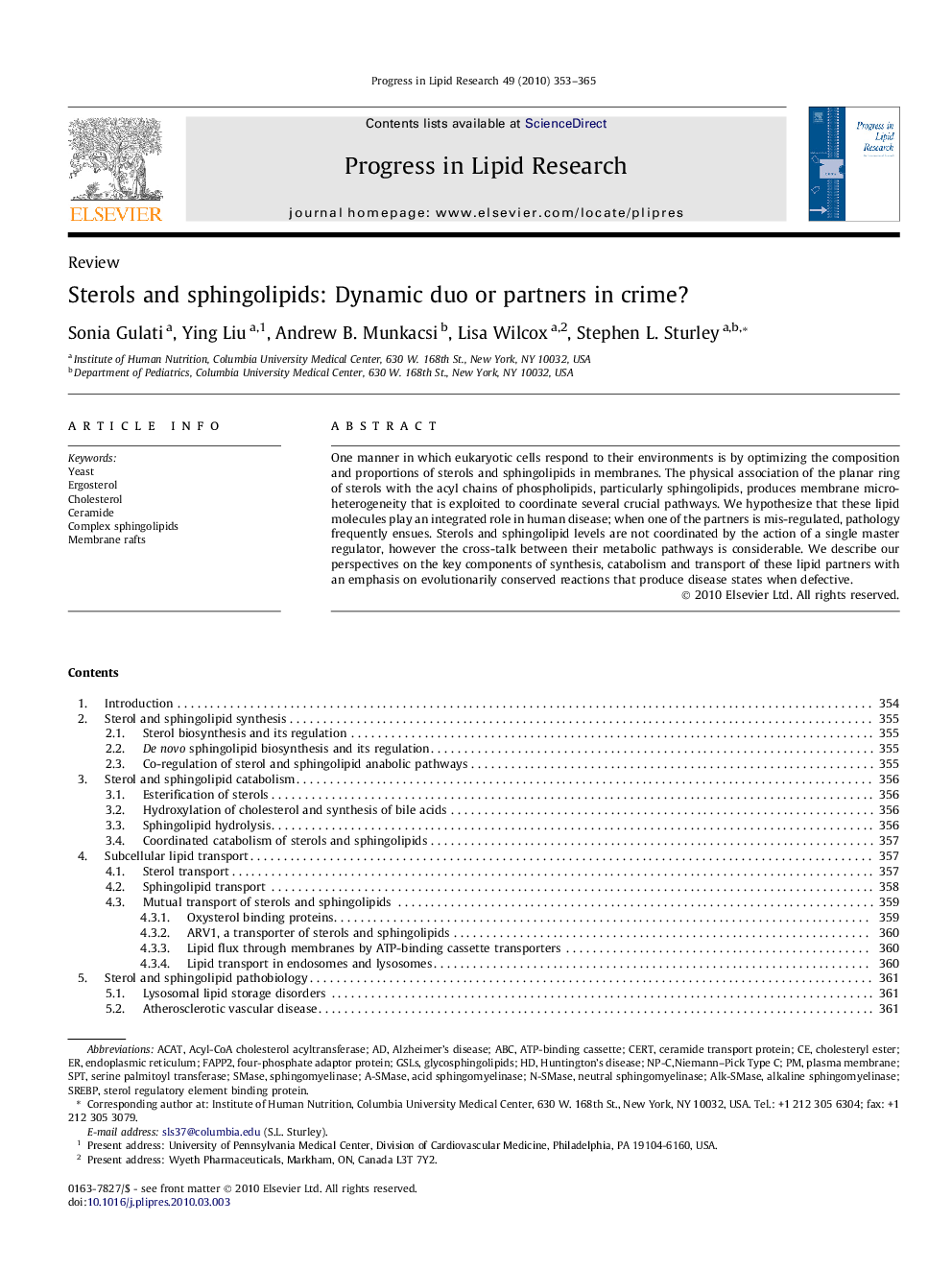| Article ID | Journal | Published Year | Pages | File Type |
|---|---|---|---|---|
| 2019212 | Progress in Lipid Research | 2010 | 13 Pages |
One manner in which eukaryotic cells respond to their environments is by optimizing the composition and proportions of sterols and sphingolipids in membranes. The physical association of the planar ring of sterols with the acyl chains of phospholipids, particularly sphingolipids, produces membrane micro-heterogeneity that is exploited to coordinate several crucial pathways. We hypothesize that these lipid molecules play an integrated role in human disease; when one of the partners is mis-regulated, pathology frequently ensues. Sterols and sphingolipid levels are not coordinated by the action of a single master regulator, however the cross-talk between their metabolic pathways is considerable. We describe our perspectives on the key components of synthesis, catabolism and transport of these lipid partners with an emphasis on evolutionarily conserved reactions that produce disease states when defective.
